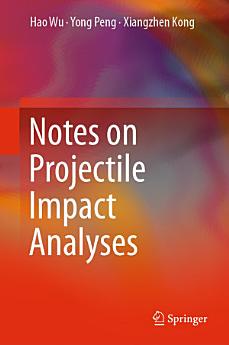Notes on Projectile Impact Analyses
អំពីសៀវភៅអេឡិចត្រូនិកនេះ
អំពីអ្នកនិពន្ធ
Dr. Hao WU is a Professor and Director of the Research Office of Structures Subjected to Impact and Blast, Research Institute of Structural Engineering and Disaster Reduction, College of Civil Engineering at Tongji University, Shanghai. He is also a member of the International Association of Protective Structures. Prof. Wu has pursued research on basic theory and engineering applications in impact/blast resistant materials and structures, including the penetration and blast effects of earth penetration weapons on military fortifications and protecting civil engineering structures against accidental impact and explosion. He has published more than 90 academic papers, including 37 indexed by SCI. He has received the second prize of the National Science & Technology Progress Award, and the first prize of the Provincial Science and Technology Progress Award, and is four-time winner of the second prize of the Provincial Science and Technology Progress Award. He is the chairman of the 4thInternational Workshop on Damage and Failure of Engineering Materials and Structures Subjected to Intense Dynamic Loadings.
Mr. Yong PENG is a lecturer at the Army Engineering University of PLA, Nanjing, China. He is currently a Ph.D. student.
Mr. Xiangzhen KONG is a lecturer at the Army Engineering University of PLA, Nanjing, China. He is currently a Ph.D. student.




